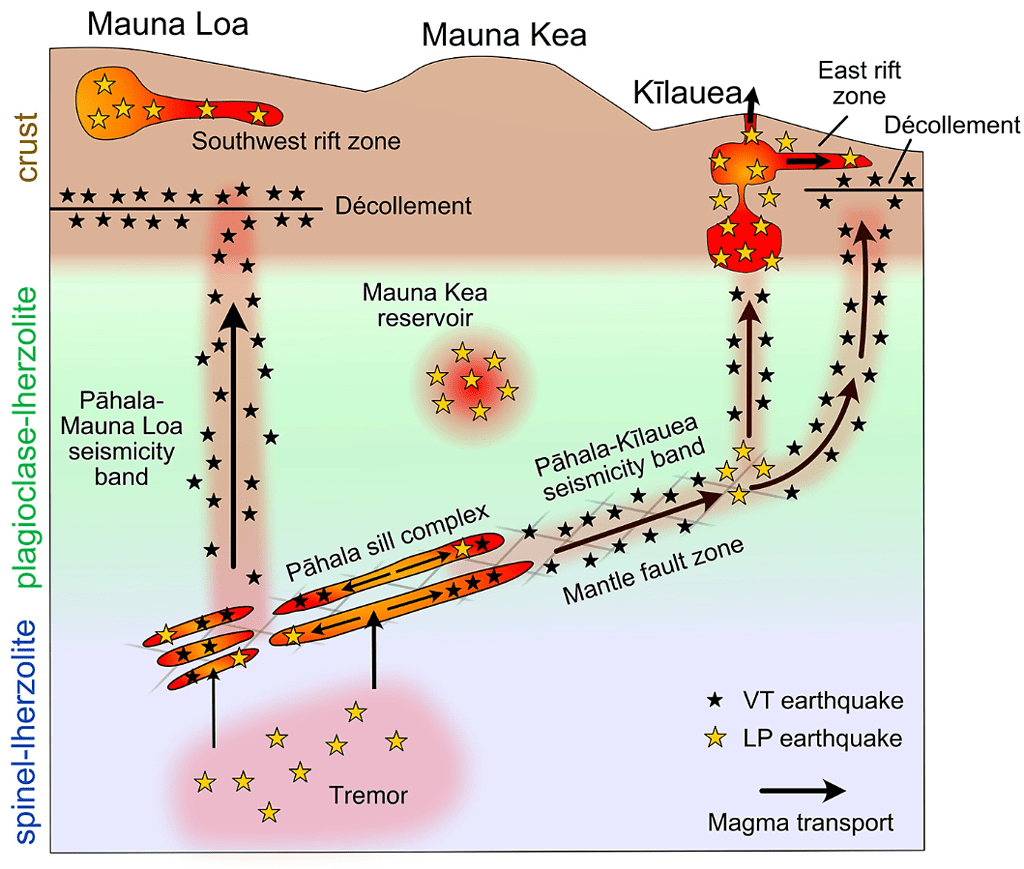Three weeks ago, the Mauna Loa volcano in Hawaii erupted after 38 years. It had been showing signs of activity since September, mostly in the form of many small earthquakes. Kīlauea’s 2018 eruption also unleashed a cascade of earthquakes, especially in the small town of Pāhala, close to Hawaii’s southern coast.
Now, researchers have linked the Pāhala earthquakes to pulses of magma that intertwine some 22-26 miles underground, slowly swelling with molten rock, conducting one of the most impressive volcano imaging studies in history.

Pāhala is currently the most seismically active region in the Hawaiian Islands. Frequent earthquakes rumble through the area, and the number of earthquakes in Pāhala has increased 70-fold since 2015. These earthquakes are typically quite deep, more than 12 miles below sea level, often reaching all the way down to the mantle.
Because these earthquakes are pretty deep, much of their energy is attenuated by the time they reach the surface. So researchers led by John Wilding of the Seismological Laboratory at the California Institute of Technology used machine learning algorithms to look for earthquakes that may have eluded initial detection. They uncovered plenty of seismic events that went undetected and with this extra information, they got to mapping the volcano’s underworld.
Mapping the hot spot
The Hawaiian volcanoes aren’t like most volcanoes. Most volcanoes are linked to the edge of tectonic plates, the ‘puzzle pieces’ that make up our planet’s crust, but hotspot volcanoes are connected directly to the mantle and not on a plate boundary, fed by underlying magma that is extremely hot compared to the surrounding mantle. The hotspot stays in place as the tectonic plates move in geological time, creating a trail of volcanoes. In fact, the 15 volcanoes of Hawaii are only the youngest in a chain of over 129 volcanoes the hotspot has created (most of which are now under the sea).
Pāhala is thought to sit right above a searing column with anomalously hot magma. As this hot column moves and ejects new material, it drives the formation of earthquakes — that much was known. But exactly when and where this magma lies was not yet known.
Volcanic earthquakes generate a specific type of signal that researchers can map. Basically, they can isolate which of the earthquakes come from magma moving around and which come from something else. Then, by mapping all these points in 3D, you can end up with an image of where the magma moves, so basically, a map of the magma system.
“At depths of 36-43 km, we resolve a 15 km long collection of near-horizontal sheeted structures that we identify as a sill complex,” the researchers write in the study. A sill is a tabular sheet intrusion that has intruded between older layers.
“These sills connect to the lower depths of Kīlauea’s plumbing by a 25 km-long belt of seismicity. Additionally, a column of seismicity links the sill complex to a shallow decollement near Mauna Loa. These findings implicate the mantle sill complex as a nexus for magma transport beneath Hawai‘i and furthermore indicate widespread magmatic connectivity in the volcanic system.”

From this geological data, they found that the magmatic structures feeding Kīlauea and Mauna Loa are linked to a common source in the mantle — a sort of magmatic pathway that connects the two. However, the reservoir of Mauna Kea, another volcano in the area, appears to be isolated.
“The Pāhala sill complex may serve as a common magma source at 40 km depth for Kīlauea and Mauna Loa. This degree of volcanic interconnectivity is remarkable in light of geochemical and past seismological results that imply Hawaiian volcanoes have distinct plumbing systems sourced from distinct regions of the underlying plume,” the researchers add in the study.
It’s not impossible for even more volcanic reservoirs to be interconnected, but for this, researchers need more studies, and they’re planning to do just that. This summer, the team will deploy a new network of seismic sensors across Kīlauea to further fill in gaps and get an even better picture of the subterranean picture of Hawaii.
The study has been published in Science.


